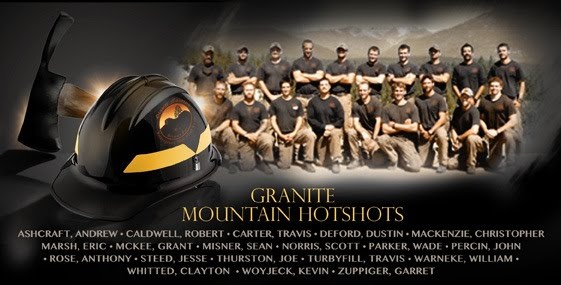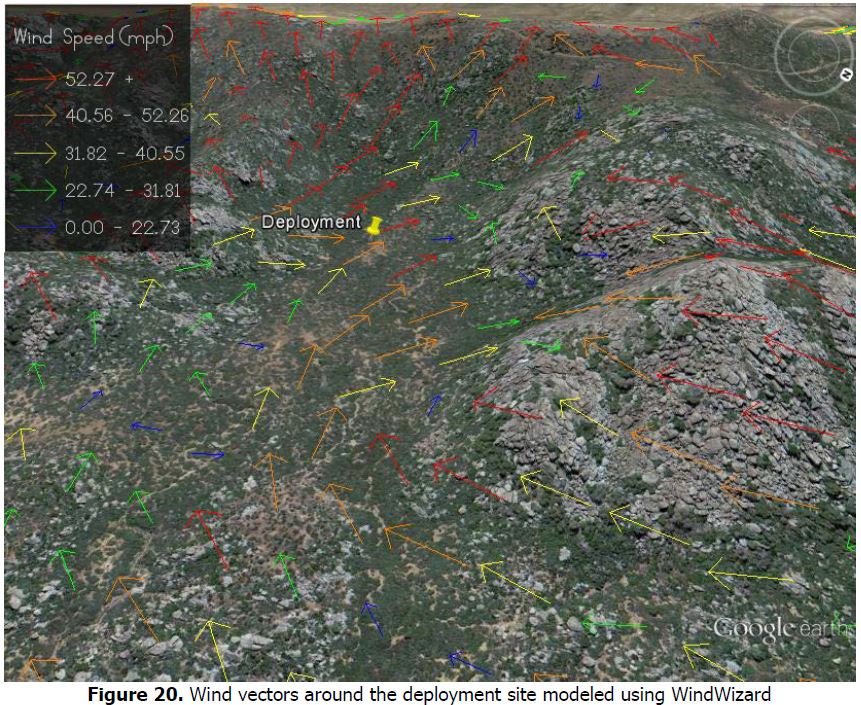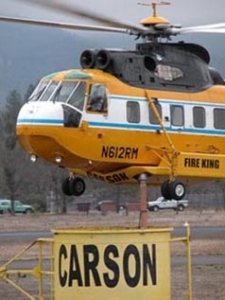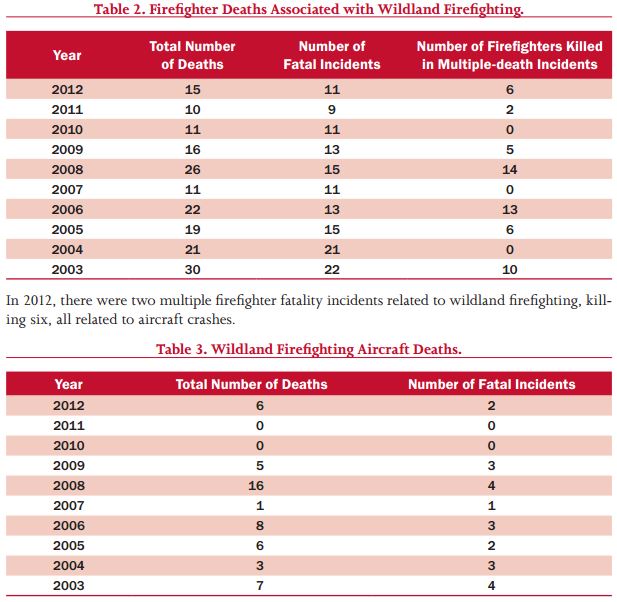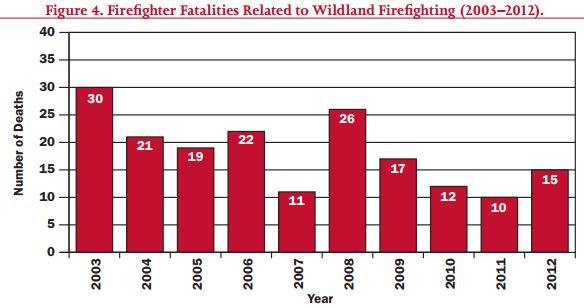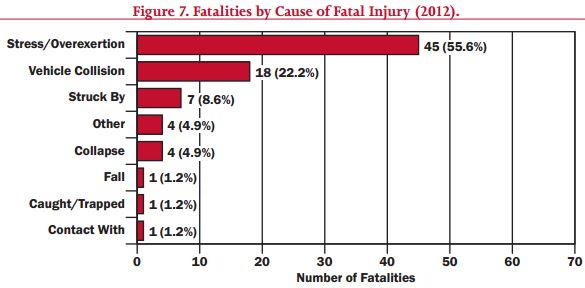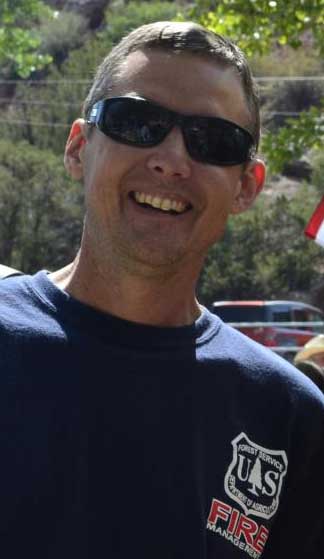(Originally published at 11:19 MDT, September 28, 2013; updated at 6 p.m. September 28, 2013. Observations after reading the report are at the bottom of this article.)
The Arizona State Forestry Division has released the Serious Accident Investigation report of the Yarnell Hill Fire, which on June 30, 2013, killed 19 members of the Granite Mountain Hotshots. It was produced by a very large cast of characters, 18 core Team Members, 17 Support Team Members, and 19 Subject Matter Experts, for a total of 54 people.
The report found:
The judgments and decisions of the incident management organizations managing this fire were reasonable. Firefighters performed within their scope of duty, as defined by their respective organizations. The Team found no indication of negligence, reckless actions, or violations of policy or protocol.
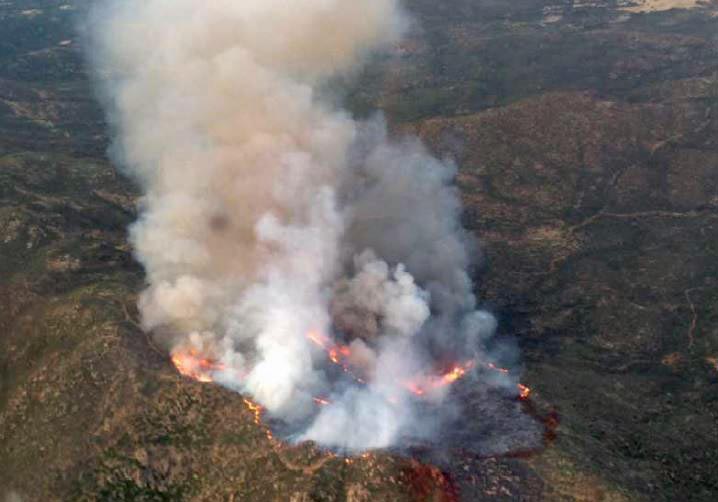
A news conference about the report was live-streamed by at least two Phoenix area television stations. In the question and answer period several national news organizations as well as local media asked questions of the five-person panel which consisted of the Arizona State Forester, two people from the investigation team, and two officers from the Prescott Fire Department.
You can download the report (6Mb file) and some “Frequently Asked Questions” about the investigation.
Below is a 21-minute video released by the investigation team today, which they described as a “A brief overview of the Yarnell Hill Fire Investigation report.” Much of it comes word for word from the report but it makes effective use of Google Earth to provide an overview of the geography of the fire.
Granite Mountain Hotshot Christopher MacKenzie shot the two video clips below shortly after 4:00 p.m. on June 30, 2013. These are the last images of the hotshots before they died. The video was unexpectedly made available today for the first time by the Prescott Daily Courier, which has an article about how the video and other photos of the fire were found.
Our observations after reading the report and viewing the press conference and the question and answer session.
The official report commissioned by the Arizona State Forestry Division, a case of them investigating themselves, did not break much new ground. There was little of a negative nature written about the crew or their employer, the Prescott Fire Department, which was barely mentioned. The Granite Mountain Hotshots were fully qualified, staffed, and trained and they were on day 13 of a permitted 14 days in a row of fighting fire. And, there was “no indication of negligence, recklessness actions, or violations of policy or protocol”.
Why did the Granite Mountain 19 leave the “black”?
The investigators emphasized that they were unable to answer one of the most-asked questions about the fatalities — why the crew left the safety of the already burned area, the black, to attempt to walk 1.6 miles mostly through unburned brush to another safety zone, the Boulder Springs Ranch. They came to within 0.38 miles of their destination when they encountered one of the heads of the fire that had wrapped around the ridge to their left in the box canyon and was headed toward them, cutting off their path probably much to their surprise. Click the map below to see a larger version of the wind at the deployment site.
No one knew where the crew was in relation to the fire
There was confusion about the location of the crew. Other firefighters thought they had either remained safely in the black where they had been for a while, or they had headed north to another safety zone. But instead, they traveled south. When they reported that they were entrapped and were deploying their fire shelters, no one knew where they were. Finally they told Air Attack they were on the “south side”, but even though a DC-10 air tanker was orbiting and ready to drop on them, airborne personnel could not find them, either due to heavy smoke or because they were looking in the wrong place. But under the extreme wind and fire conditions, it is unlikely that air support would have helped the firefighters very much.
Improving situational awareness
This is another fire, like the Esperanza Fire, where if the fire overhead, such as a Division Supervisor, Operations Section Chief, or Safety Officer, had known the location of the personnel on the fire in relation to the real-time spread of the fire, it could have saved lives — 24 on these two fires alone.
It is irresponsible for the wildland fire agencies to continue to do nothing to improve the situational awareness of firefighters, which has proved fatal to too many of them.
We have written about this several times before. Many local fire departments, EMS divisions, and police units have the ability to send location data to dispatchers. If the analog or digital ground-based radio systems being used today can’t handle this task in remote areas, then use a satellite-based system. The U.S. Forest Service asked for proposals to purchase thousands of little location devices last year, and adding high tech video systems to air attack ships could help. We have also written about a device we called a Firefighter’s Emergency Situational Awareness Device, a FESAD.
One of the recommendations in the report was to “review current technology that could increase resource tracking, communications, real time weather, etc.” The Q&A panel today said, in response to a question, that the surviving family members of the 19 Hotshots strongly suggested while being briefed this morning that tracking systems for firefighters be utilized.
Very Large Air Tanker not ordered because of “steep terrain”
The information that the state of Arizona released on July 16 about the resources deployed on the fire said a DC-10 Very Large Air Tanker (VLAT) was in Albuquerque and available on June 29, but was not ordered due to Air Attack’s concern about its effectiveness in steep terrain and inability to deliver retardant before cut-off time. The way this was addressed in today’s report was “ICT4 declines the VLAT offer at 1750 [June 29] based on fire conditions.” There was nothing about “steep terrain”, which didn’t exist on the fire to the extent that it would severely limit the effectiveness of a DC-10 VLAT. In fact, the next day, June 30, they used the hell out of both DC-10s, dropping over 88,000 gallons in 8 flights. A recommendation in today’s report was to “…develop a brief technical tip for fire supervisors/agency administrators on the effective use of VLATs.”

The DC-10s may have been effective on June 29 when the fire was still small, but by the time they both arrived on June 30, the day of the entrapment, the wind event was making it difficult for anything dropped from the air to slow down the fire — too much heat, and too much wind blowing the retardant away before it hit the target.
Aerial Supervision Module taking on too many roles?
During the time of the entrapment the roles of Air Attack and Lead Plane were filled by a single aircraft called an Aerial Supervision Module (ASM), coordinating all of the aerial firefighting, directing air traffic, preventing aircraft from bumping into each other, developing tactics, AND serving as Lead Plane, physically leading the air tankers into their targets about 200 feet above the ground. The Lead Plane duties limited their ability to perform full Air Attack responsibilities over the fire at the same time. The report said, “ASM was too busy handling multiple duties to communicate with the crew just prior to the deployment”.
One of the recommendations in the report is to request the National Wildfire Coordinating Group to develop guidance to identify at what point is it necessary to separate the ASM and Air Attack roles to carry out required responsibilities for each platform.
No overwhelming force
The ordering and use of ground and aerial firefighting resources was less than aggressive on June 29, the day before the tragedy when the fire was still small. The only air tankers used that day were two single engine air tankers, and for only part of the day, dropping a total of 7,626 gallons. After being released, they were requested again by Air Attack, but dispatch only allowed one to respond to the fire, wanting to keep one in reserve in case there were other fires. General Norman Schwarzkopf’s philosophy when confronting the enemy was to use “overwhelming force”. This strategy also is effective when confronting a wildfire. Overwhelming force for a short amount of time can prevent megafires burning for weeks, consuming many acres, dollars, and sometimes homes and lives.

